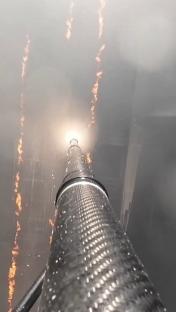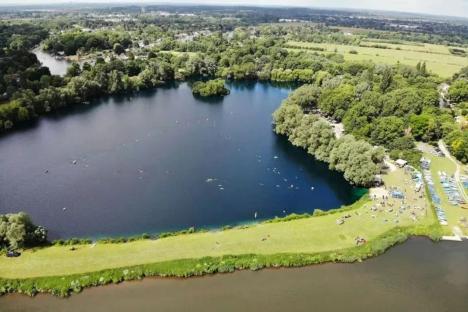Farah Alibay is living her dream to unlock the mysteries of Mars. But the 28-year-old Canadian engineer is also helping to chart a new path in aviation history — and doing it on another world.
Alibay is part of a team of engineers that designed and tested a space helicopter — nicknamed “Ingenuity” — that is set to take off over the red planet in the next few days.
It is a major “first” in space exploration — namely, the first time an autonomous aircraft has ever taken flight on another planet.
Read more: NASA rover Perseverance takes first spin on surface of Mars
“If we can demonstrate that we can fly on Mars, that opens all sorts of opportunities for future missions,”; Alibay told Global News’ The New Reality.
“Right now, we've been limited to driving on Mars, which is still super cool, but it's fairly slow,”; she said.
Ingenuity was affixed to the Perseverance rover that landed on the red planet on Feb. 18. Earlier this month, the chopper “emerged” from the belly of the rover, and is now operating on its own.
“I mean, we’re flying on another planet. Come on!”; Alibay said.
“It’s kind of crazy because we’ve only been flying on Earth for about 100 years. And now we’re saying we’re going to go to another planet where gravity is different.”;
Detached from the rover, the helicopter, which weighs less than two kilograms, has had to survive temperatures that dip to -90 Celsius, drawing upon enough of its own stored energy to remain functional. Mars receives only about half of the solar energy that reaches Earth during the daytime. Building a machine that can stay warm and power itself up enough to fly under those conditions — a mere 272 million kilometres from Earth — is not easy. That, and the fact that Mars’ atmosphere is just one per cent as dense as the Earth’s, makes it extremely challenging to build a flyable helicopter.
Overcoming hurdles
If landing a rover, and flying a helicopter, on Mars came with plenty of twists and turns, so too did Alibay’s path to working on the mission.
Her job at NASA began with an internship — and an unlikely one at that. She submitted many applications before she landed the job. “I probably had like 50 of them rejected. And one day, someone ... at a dinner, at a conference, took interest in my research and offered me an internship.”;
The Montreal native moved to England at the age of 13, with what she describes as wobbly English. She says she “went to public school; I didn’t have access to privileged education,”; and yet she was accepted to prestigious universities, first at the University of Cambridge, and then at the Massachusetts Institute of Technology, where she completed her PhD. Her parents were role models, but when it came to the field of space exploration, there were not many people she could look up to and identify with.
“I didn't have someone who looked like me in this position,”; she says. “I grew up in the ’90s so there was a lot of interest in space, but a lot of people in these positions were white men, and it took a while for me to even allow myself to dream that I could be part of these people.”;
But she persevered, and, in her role as a systems engineer at Nasa's Jet Propulsion Laboratory, emphasizes that “it’s really important, now that I’m here, to show girls, to show minorities, that, hey, it doesn’t matter what you look like,”; she says. “There’s a place for you here.”
Read more: Take a look around Mars with Perseverance rover's HD photo panorama
Bridging the arts & sciences
That story resonates deeply with Chimira Andres, a planetary geologist from Barrie, Ont., who, like Farah Alibay, grew up feeling dismayed at the lack of representation in the field by women, and especially women of colour. That’s finally changing now, Andres said.
“It’s just great to see that diversity in mission control that wasn’t evident before,”; she said. “There are a lot of inspirational people out there, but if you can’t really see them, you can’t see yourself in that position as well.”;
Her path to space was also rather unusual. She began her career as a dancer — and has since come to discover the many parallels between dance and the world of space exploration.
“I wanted to pursue science and space, and dance, at the same time, and just didn’t know how,”; she said. Dance, she says, has taught her “everything from discipline to resilience”; — skills that are critical for success in space.
After nearly two years at the Canadian Space Agency, Andres has spread her wings to Europe.
Last September, she landed a job in the Netherlands at the European Space Agency, where she is a graduate trainee in the agency’s science and technology education program.
“I really want to spread the love for STEM, the love for space,”; she says. “Space is contagious, I think. So once you’ve talked about space to someone … you’ve got them hooked.”;
Read more: Wobbly muon particles hint at a new, secret force of nature
Homegrown talent
Though Alibay and Andres are both working abroad, there is no shortage of brainpower in Canada when it comes to aerospace engineering and space exploration. Where Canada excels is in education, and post-secondary programs here attract the best and brightest from all over the world.
That includes aerospace graduate Eitan Bulka, who came to Montreal from Boston a decade ago, and recently defended his PhD at McGill.
“There are a lot of opportunities here in Montreal, so I'm actually only looking to stay in Montreal,”; he told Global News.
His work looks at increasing the autonomous capacities of unmanned aerial vehicles. These include everything from drones that deliver goods purchased online to helicopters and other aircraft that can fly autonomously on other planets — including Mars.
“It’s challenging enough to do this on Earth, and then there are extra challenges on Mars,”; he says. “But, a lot of the tools that we develop on Earth are also applicable on Mars.”;
He says that the idea that Canadians “go abroad” to pursue dreams in space — or that there is somehow a brain drain —no longer really holds.
“In the past, you kind of had to move to California. But now a lot of these (aerospace) companies are … in Canada and in Montreal, and they’re more open to having remote employees.”;
And yet, the aerospace field in Canada is still “somewhat scattered,”; says Inna Sharf, the director of McGill’s aerospace mechatronics lab. There are dozens of aerospace companies in Canada, from startups to large employers, and several university research groups working on everything from space engineering to self-driving cars, but “we don’t have NASA. … We don’t have anything uniting all this work, pulling it together.”;
Read more: How cigarettes, coffee and Canadian engineers helped put men on the moon (July 22, 2019)
Challenging terrain
There are definitely no shortcuts in getting to Mars, and the Perseverance mission is proof of that. NASA has landed the rover — and the Ingenuity helicopter with it — in one of the most inhospitable parts of the planet.
The area is known as Jezero Crater, and NASA chose the site because there is evidence of an ancient river delta that may have been able to support life more than 3.5 billion years ago. The crater has been shown to contain clay deposits, which can only form when there is water. Similar clay formations are found in the Mississippi River delta.
And making those connections with Earth is where Andres, the planetary geologist from Barrie, excels. She began her space career by learning about our planet. “I majored in Earth and environmental sciences,”; she said, “because I heard that to be a good planetary scientist, you had to be an expert on Earth first.”;
Of course, Mars is a “whole other world.” Yet, the parallels to science on Earth, whether it’s about engineering an autonomous aircraft or mapping ancient glaciers and streams, are remarkable.
“Space,”; Andres says, “is not just rocket science. It’s not just biology. It’s all of them. It’s physics, math, combined with Earth sciences, and everything that you need, to help scientists bring a mission to Mars.”;
See this and other original stories about our world on The New Reality airing Saturday nights on Global TV, and online at globalnews.ca.






